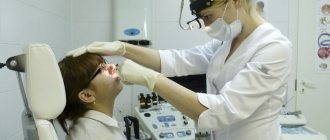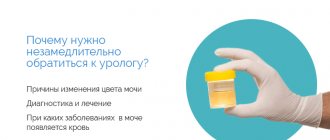Absorption and excretion of calcium
Calcium is present in our daily diet. About 40% of the total amount of calcium salts (carbonates, phosphates, etc.) entering the body with food is absorbed in the intestines. The initial part of the duodenum is responsible for their absorption.
The absorption process occurs against the concentration gradient and requires energy expenditure from enterocytes (intestinal epithelium). This process is regulated by calcitriol (the active form of vitamin D), which stimulates the synthesis and transport of calcium transport proteins.
During the day, approximately 400 mg of Ca is excreted from the human body in stool and 100 mg in urine. It is the presence of calcium in the urine, its increased concentration, that is the object of study with the Sulkovich test.
| What increases calcium absorption? | |
| Vitamin D | The active form of vitamin D (calcitriol) in the body stimulates the synthesis of calcium transport protein in intestinal epithelial cells |
| Parathyroid hormone (parathyroid hormone) | An increase in the level of this hormone in the blood leads to increased synthesis of the active form of vitamin D (increased activity of 1a-hydroxylase in the kidneys) and increased absorption of the microelement |
| Acidity | A decrease in acidity leads to increased absorption of calcium salts, as their solubility increases. In an alkaline environment, absorption decreases as insoluble salt is formed |
| Diet rich in proteins | As protein levels in the daily diet decrease, absorption decreases. |
| Amino acids | Some amino acids (lysine, arginine) increase calcium absorption by increasing the solubility of its salts |
| Sugars and organic acids | Organic acids produced by intestinal microflora during the fermentation of sugars increase the solubility of calcium salts and increase their absorption |
| What reduces calcium absorption? | |
| Phytic acid | Phytic acid is found in cereals; when it interacts with calcium, it forms insoluble salts, reducing the absorption of the mineral. |
| Oxalates | Oxalates are present in leafy vegetables |
| Dietary fiber (fiber) | Excess dietary fiber in the diet leads to decreased absorption of calcium in the intestine and increased excretion in stool. |
| Increasing consumption of phosphates, magnesium | |
| Taking glucocorticoids (steroids) | Taking glucocorticoids is accompanied by a decrease in calcium transport into intestinal epithelial cells |
Table 1 - Factors affecting calcium absorption
After absorption in the intestine, calcium ions enter the blood plasma. In the plasma they are in three equilibrium states: free, bound to proteins and bound to anions.
- 1Half of blood calcium is in free, ionized form. It is the ionized form that is metabolically active and is responsible for maintaining the normal functional state of nerve fibers, the permeability of cell membranes, muscle contraction and hormone secretion.
- 240% of the total is in a protein-associated state (most often in association with albumin).
- 310% is associated with plasma anions (bicarbonate, phosphate, lactate, citrate).
| Age | Male gender, mg/dl | Female gender, mg/dl |
| 1-14 years | 9.6 – 10.6 | 9.6 – 10.6 |
| 15-16 years old | 9.5 – 10.5 | 9.1 – 10.3 |
| 17-18 years old | 9.5 – 10.4 | 9.1 – 10.3 |
| 19-21 years old | 9.3 – 10.3 | 8.9 – 10.1 |
| 22 and older | 8.9 – 10.1 | 8.9 – 10.1 |
Table 2 - Level of calcium in blood plasma depending on age
The main functions of the microelement in the body:
- 1Development of bone tissue (skeleton, teeth). For the normal formation of the skeleton, a huge amount of trace elements is required.
- 2Bones are also a calcium reservoir. Osteoblast cells are responsible for bone mineralization, and osteoclasts are responsible for resorption, which lead to the leaching of microelement salts from the skeleton.
- 3Excitation and contraction of myocytes (muscle tissue cells). Ca ions, interacting with troponin, trigger myocyte contraction. They also reduce the excitability of skeletal muscles (with a decrease in the level of Ca in the blood, convulsions can develop).
- 4Conduction of nerve impulses.
- 5The microelement is one of the key links in the blood coagulation system.
- 6The mineral is necessary for the release of hormones (insulin, parathyroid hormone, calcitonin, vasopressin) from the cells of the endocrine glands.
- 7Activation of pancreatic enzymes, blood coagulation system, renin (an enzyme responsible for the regulation of blood pressure).
1.1. How does calcium get into the urine?
The main structural unit of the kidney is the nephron, which consists of a network of tubules densely intertwined with a capillary network. Each kidney has more than one million nephrons. Calcium enters the primary urine through filtration of blood plasma in the renal glomerulus.
From the lumen of the nephron tubules into the surrounding capillaries, the nutrients and microelements necessary for the body, including Ca, are reabsorbed. This creates secondary urine, which a person releases when urinating.
An increase in the level of Ca in the blood plasma is accompanied by an increase in its concentration in primary urine. The maximum threshold concentration of a microelement in plasma at which its complete reabsorption from primary urine in the nephron tubules will occur is 7.5 – 9.0 mg/dl.
Consequently, if the plasma contains a slightly higher concentration of Ca (a level of no higher than 10-10.5 mg/dL is considered normal), then its salts are found in the secondary urine. Exceeding the physiological threshold leads to a pronounced increase in the concentration of the microelement in the excreted urine.
Why is Sulkowicz's test needed?
The Sulkowicz test shows increased or decreased levels of calcium salts in the urine. In order to detect them, a special Sulkovich reagent, which contains oxalic acid, is added to the urine sample obtained from the patient.
When interacting with Ca2+ ions, oxalic acid leads to their precipitation, and the resulting sample becomes cloudy. Next, a visual assessment of the degree of turbidity of the sample is made and the corresponding designation is set from “-” - no turbidity to “++++” - extremely pronounced turbidity.
You need to understand that a positive result does not yet indicate the presence of a disease (a result up to “++” inclusive is considered the norm) and is observed in healthy people. However, the formation of a pronounced sediment, as a rule, indicates the presence of an imbalance in the metabolism of the microelement.
How to collect the analysis correctly?
When directly collecting biological material, you need to follow the following algorithm:
- Buy a sterile urine container with a screw-on lid.
- Carry out hygienic treatment of the genitals using regular soap, which does not contain additives, including fragrances.
- Collect urine from the second and third streams (the first is not necessary).
- Close the container without touching the inside. It is treated with a preservative to preserve liquid.
- Deliver the urine to the laboratory for a Sulkowicz test.
The main condition is to comply with the time of urine collection. This should happen in the morning. You should not eat or drink before the procedure. The fence rules are mandatory for both adults and children.
The boy should place a pre-prepared container under the stream, and the girl should simply place it in the pot. It is advisable to first show the child the device and explain why it is needed. Then everything will be done correctly and without unnecessary emotions.
Indications for the study
- 1Symptoms of hypocalcemia (presence of muscle spasms and cramps, paresthesia, numbness in the limbs, increased fatigue).
- 2Symptoms of hypercalcemia (weakness, nausea, vomiting, increased diuresis, interruptions in heart function, arrhythmias, constipation).
- 3Urine analysis according to Sulkovich is also done to confirm the diagnosis of urolithiasis.
- 4Monitoring of patients on vitamin D and calcium therapy. An increased level of a microelement based on the test results allows you to adjust the dosage of drugs (in pediatric practice, this is monitoring the treatment of rickets in children).
- 5Examination of patients with diseases accompanied by an increase/decrease in the level of Ca in the blood.
Negative test result
A negative result can occur in a healthy person when the level of a trace element in the blood plasma does not exceed the threshold value for reabsorption in the blood plasma.
For a more accurate diagnosis, it is often necessary to determine the daily excretion of calcium in the urine. With hypocalcemia (low Ca levels in plasma), the test result may be negative.
| Pathology | Comments |
| Hypocalcemia | |
| Hypoparathyroidism, hypothyroidism | Decreased levels of parathyroid and thyroid hormones. |
| Malabsorption (decreased intestinal absorption capacity) | Malabsorption can accompany a number of pathological conditions: celiac disease, Crohn's disease, short bowel syndrome, etc. |
| Malignant neoplasms of bone tissue | |
| Acute jade | Decreased synthesis of vitamin D in the kidneys. |
| Osteomalacia | The development of osteomalacia occurs against the background of hypovitaminosis D. |
| Rickets | The development of rickets in a child occurs against the background of hypovitaminosis D. |
| Hypovitaminosis D |
Table 3 - When does urine calcium level decrease?
When is the Sulkowicz test performed in children and adults?
Children undergo this test to be able to monitor the concentration of calcium in the body. But adults are also recommended to undergo the study by doctors of various specialties: oncologists, urologists, endocrinologists, neurologists, nephrologists. After all, disturbances in calcium metabolism affect several body systems. There are several indications for which a urine test is performed using the Sulkowicz system.
For example: suspicion of a tumor (some types of tumors produce Ca), too much intake of vitamins A and D (analysis will help determine the correct dose), suspicion of sarcoidosis. Doctors recommend testing not only urine for the presence of calcium, but also blood. This will help establish a more accurate diagnosis. In addition, sometimes metabolic disorders can be observed only in the urine, which indicates a violation of the filtration of the kidneys, and not the metabolic system as a whole.
Is a positive result good or bad?
| Result | Meaning |
| + | Variant of the norm |
| ++ | |
| +++ | An increase in the level of calcium in the urine, indicating an increase in the level of the element in the blood plasma (hypervitaminosis D, prolonged immobilization, etc.) or a decrease in its reabsorption in the nephron tubules in case of kidney damage (diabetes mellitus, Fanconi syndrome, etc.). |
| ++++ |
Table 4 - Interpretation of the results of urine analysis according to Sulkovich.
An increase in the calcium content in the urine (+++/++++) can be observed in the following situations (see Table 5). In children, this result is most often observed when prophylactic doses of vitamin D are exceeded or during the treatment of rickets.
| Disease | Comments |
| Acromegaly | Vitamin D metabolism disorder |
| Diabetes | Diabetic nephropathy as the main cause of losses |
| Fanconi syndrome | Congenital/acquired damage to nephron tubules |
| Excess glucocorticoids | |
| Vitamin D toxicity | Increased intake of vitamin D is accompanied by increased calcium metabolism. In children, vitamin D hypervitaminosis can be observed when prophylactic doses are exceeded or during treatment of rickets |
| Osteoporosis | Bone destruction |
| Leukemia, lymphoma, myeloma, tumor metastases to bone tissue | Leaching calcium from bone tissue |
| Kidney stones | |
| Prolonged immobilization | Bone destruction |
| Hyperparathyroidism, hyperthyroidism (thyrotoxicosis) | |
| Wilson's disease | Damage to the kidney parenchyma and decreased calcium reabsorption |
Table 5 - When does calcium level in urine increase?
How to collect urine according to Sulkovich
Before collecting the sample, it is necessary to wash the genitals thoroughly. It is recommended to use filtered water and soap without fragrances or foaming additives. The algorithm for collecting material for research according to Sulkovich is as follows:
- For testing, you only need morning urine, which is collected on an empty stomach; you cannot eat or feed the baby.
- During urination, a person produces the 1st, 2nd and last portion of urine. To carry out the test, you will need the last and second; it is very difficult to determine the exact volume in children, but you must try to follow the sampling rules.
- Immediately close the container using the screw cap without touching the inside surface with your hands.
In a baby
In pediatrics, this analysis is one of the main ones. Urine analysis according to Sulkovich is mandatory for infants, but the collection procedure itself is somewhat difficult, so parents should consult in advance on how to properly collect material for testing. The best option would be continuous sampling for 24 hours, but this is extremely difficult to do in infants. As a rule, morning liquid is taken on an empty stomach; special urinals, which are conveniently attached to the baby’s perineum using a bandage and Velcro, help to collect it.
- How to block a phone number so they don't call
- Why does my right hand and fingers go numb?
- Rassolnik soup: recipes with photos
Preparing for analysis
On the eve of the analysis (3 days before), you need to exclude foods high in calcium from your diet (milk and dairy products, leafy vegetables and herbs, nuts, soy, eggs, fish).
The patient needs to slightly reduce the level of protein in the diet, eliminate alcohol and drinks containing caffeine, and stop taking dietary supplements and vitamins.
- 1Taking certain medications may affect the accuracy of the test (see Table 5). It is necessary to inform your doctor about all medications you are taking and find out about the possibility of temporarily stopping them.
- 2On the day of the Sulkovich test, a morning portion of urine is collected before meals.
- 3Collection of an average portion of urine with a volume of 50 ml is carried out in a sterile container. The container is closed and delivered to the laboratory for testing. You can read how to collect urine from a child in our other article (follow the internal link).
| Drugs that increase urinary calcium levels | Drugs that lower calcium levels in urine |
| • Acetazolamide • Ammonium chloride • Asparaginase • Calcitonin • Calcitriol (active form of vitamin D) • Corticosteroids • Initial diuretics • Ergocalciferol • Ethacrynic acid • Mannitol • Mersalyl • Vitamin D • Parathyroid hormone • Triamterene | • Angiotensin • Calcitonin • Chronic use of diuretics • Lithium • Neomycin • Oral contraceptives • Spironolactone |
Table 6 - List of drugs that affect calcium metabolism
After receiving the test results, you must contact the attending physician who prescribed this test for their final interpretation and explanation.
A negative result, as well as a sharply positive one (+++/++++), may require further examination of the patient or adjustment of the dose of vitamin D for rickets in a child.
Decoding
The Sulkovich reaction is carried out in pediatrics to determine the amount of Ca that is excreted from the body along with urine and helps determine the presence of calciuria. When diagnosing infants, it helps to identify rickets. The interpretation is carried out by a doctor who, after adding the reagent, determines the degree of turbidity of the material. More often, this study helps to establish the required dose of vitamin D and monitor the results of treatment.
Normal in children
A urine calcium test in children may indicate the development of certain diseases. If the material does not become cloudy, the result is considered negative. If the doctor cannot accurately determine the degree of turbidity, then the test must be repeated after 3-5 days and the study is marked as doubtful. If there is noticeable turbidity, it is set on a scale from 1 to 4 in the form of a “+” sign. Normally, children without abnormalities in the functioning of the kidneys and other organ systems should have an indicator of 2 “+”; the material shows a slight clouding reaction.
0 points - what does it mean?
In this case we are talking about calcium deficiency in the body. The element does not enter the child's body in sufficient quantities, which can cause rickets, a thin layer of tooth enamel. In adults, this condition indicates a lack of calcium in the foods that a person consumes. A deficiency of this microelement indicates in some cases the development of hypoparathyroidism (weak production of the hormone PTH by the body). This condition requires treatment, increasing the intake of calcium in the body (taking special medications).
The absence of turbidity and sediment during the sample indicates, in some cases, due to the fact that the person took certain medications before collecting the material. In the presence of a malignant tumor, a negative result indicates the appearance of metastases in the human body. A child who does not have enough vitamin D can get 0 points. To avoid the development of complications, children with a negative result are monitored by a doctor.
What does 1 point mean?
This slight cloudiness of the urine when the sample is taken is within the normal range; excess or deficiency of calcium is not observed. In diagnostics, this indicator is considered a medical norm and does not require any additional action. The pathology will be expressed by a sharp clouding during the Sulkovich study. When deciphered, it will be written as 3 or 4 “+” signs, which indicates a high calcium content. A person with the same result will need treatment.











